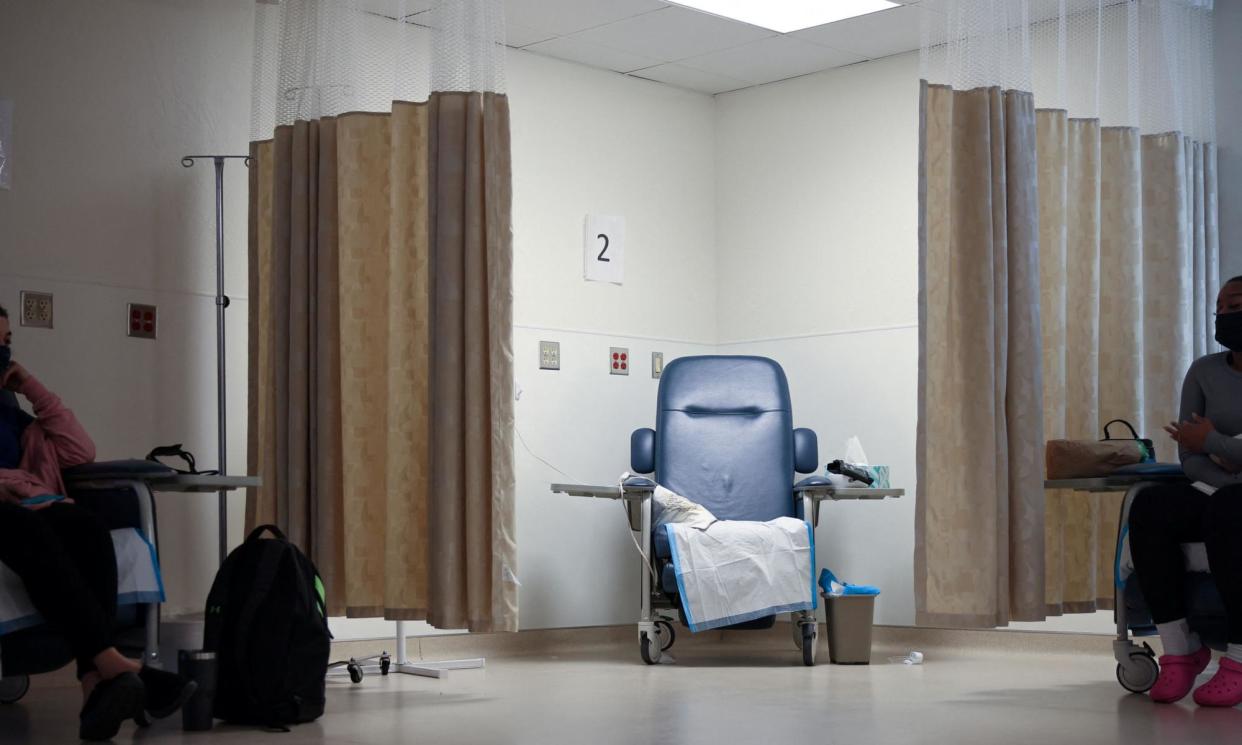State abortion bans are forcing doctors to provide substandard care – new study

More than two years after the US supreme court overturned Roe v Wade, state abortion bans are forcing doctors to provide substandard medical care, new research released Monday shows.
The study describes how one woman, whose water broke too early on her pregnancy, ended up in the ICU with severe sepsis because she could not get an abortion to end her doomed pregnancy. Her story is one of dozens of narratives collected by the research group Advancing New Standards in Reproductive Health, which is housed at the University of California, San Francisco.
Another woman’s liver transplant was canceled because doctors discovered that she was pregnant – even though the pregnancy was unwanted. Yet another was forced to give birth to a baby with anencephaly, a severe and fatal fetal anomaly. By the time the baby was handed over to the mother, the baby’s skin had turned from pink to navy.
“The scream and wailing she let out once she saw the baby was soul-crushing and enough to break everyone in the room,” a medical student recounted to researchers. “The mother kept screaming ‘Why, God?’ in Spanish over and over, but this was not a problem up to the divine, but rather a completely man-made problem.”
Related: Supreme court allows US to withhold Oklahoma’s family planning fund
Advancing New Standards in Reproductive Health first started collecting narratives from doctors about their post-Roe experiences in August 2022, shortly after Roe fell in the supreme court case Dobbs v Jackson Women’s Health Organization. The group published a preliminary report of their findings in May 2023; they have collected a total of 86 narratives.
“One question that we had was: were the changes that we were seeing initially related to the initial shock of the Dobbs decisions and the laws that then went into effect? Would clinical protocols kind of adjust and healthcare providers would figure out how to provide high-quality care? Would these poor-quality cases disappear?” said Dr Daniel Grossman, the lead author on the study. “These cases are continuing to happen.”
Since Roe’s demise, more than a dozen states have totally banned abortion. Every state with a ban on the books technically allows abortions in cases of medical emergencies, but the exact details of what constitutes an “emergency” can differ from state to state. Doctors across the country have said that exceptions in abortion bans are worded so vaguely and confusingly that they are unworkable in practice.
Ideally, if doctors realize a patient is careening towards a medical emergency, they act as swiftly as possible. Abortion bans, doctors have said, force them to wait to act until patients are on the brink of death.
Some patients experienced massive, life-threatening blood loss after being delayed care for miscarriages, according to the Advancing New Standards in Reproductive Health report. One doctor in a state with an abortion ban told researchers that staffers at a hospital declined to help a woman who was in severe pain in the midst of a miscarriage.
“I will never forget this case because I overheard the primary provider say to a nurse that so much as offering a helping hand to a patient getting onto the gurney while in the throes of a miscarriage could be construed as ‘aiding and abetting an abortion’. Best not to so much as touch the patient who is miscarrying,” the doctor said. “A gross violation of common sense and the oath I took when I got into this profession to soothe my patients’ suffering.”
“Some of the clinicians talked about wanting to move to a state where abortion was still legal, even though they weren’t primarily abortion providers,” Grossman said.
Most patients described in the report were between the ages of 18 and 35, and were dealing with second-trimester pregnancy complications, ectopic pregnancies (which are nonviable), fetal anomalies or miscarriages. Black and Latinx patients were, researchers noted, disproportionately represented; research has long shown that they are more likely to endure substandard care.
Patients who were in some way connected to the carceral system also faced obstacles to care. In one case, a 15-year-old in juvenile detention had a baby because she could not get an abortion in her state. In another case, a woman who was on parole in a state with an abortion ban asked for permission to leave for an abortion and was denied. She left the state anyway for the procedure, but refused sedation because she feared being drug tested.
There is little quantitative research into how abortion bans are affecting medical care, Grossman said, although one study has uncovered a link between Texas’s six-week abortion ban – which was in effect for about 10 months before Dobbs ushered in a near-total ban – and an increase in infant deaths.
Advancing New Standards in Reproductive Health continues to receive reports from doctors, Grossman said, although the number of submissions has declined.
“I think part of the reason that the number of submissions has gone down is that clinicians have become kind of inured to this,” he said. “This has now become the new normal, and it’s no longer as shocking. They’re also just really burnt out and frustrated by not being able to provide the care that they were trained to provide.”


